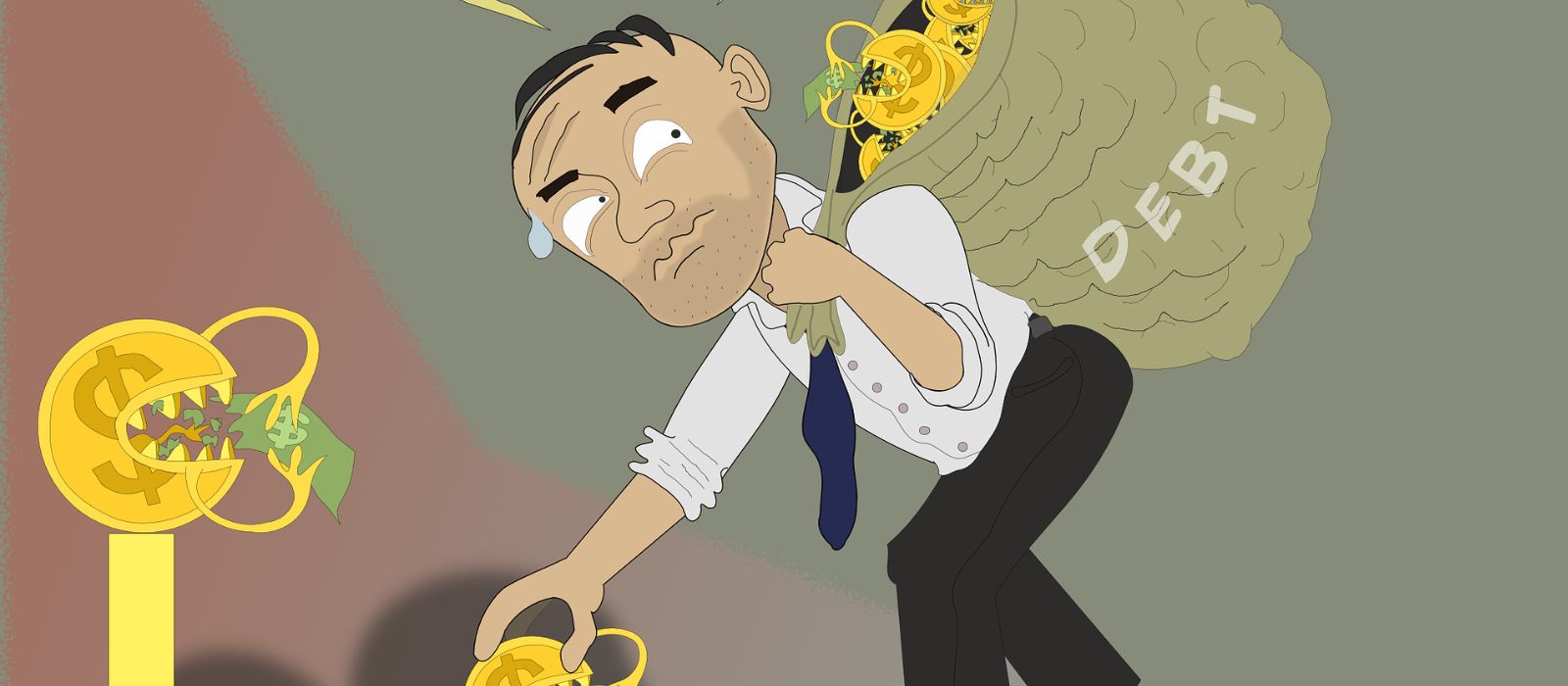Introduction
Do you feel like you’re stuck in never-ending debt and that you’ll never be able to reach financial freedom? If so, you’re not alone. Millions of Americans struggle with debt, and it’s not always easy to figure out the best way to tackle it. The good news is with the right debt elimination strategies, you can take control of your finances and eventually become debt-free. We’ll discuss debt elimination and the techniques you can use to reach financial freedom. Read on to learn more about debt elimination strategies to help you reach your goals.
What is Debt Elimination?
Debt elimination is the process of reducing or eliminating debt. It involves various strategies and methods to help individuals and families get out of debt and achieve financial freedom. Debt elimination is an integral part of financial planning and requires careful consideration of several factors.
Debt elimination is typically started by calculating your total debt and determining an action plan. This plan should involve reducing your current debt and addressing five key components: budgeting, priority debt, secured and unsecured debt, consolidation, and bankruptcy.
Budgeting is the first step in Debt Elimination as it allows you to assess your financial situation and make a plan to decrease your total debt. This includes considering your income, expenses, and debts already in place. Through budgeting, you can create an organized strategy to eliminate debt with a budget that works best for you.
Priority debt, such as mortgages or car payments, should be addressed first and given the highest priority. By tackling your priority debt first, you will be better able to focus on eliminating your other debts. Additionally, paying off priority debts on time can help boost your credit score.
Next, secured and unsecured debt should be identified and addressed. Secured debt is secured by an asset, such as a mortgage or car loan, while an investment does not back unsecured debt. Depending on the type of debt, it is crucial to have the plan to pay off either type of debt.
Consolidation is another option available to you and involves taking out a single loan to pay off multiple debts. This can help simplify your debt repayment and reduce your interest rates. However, consolidation may require you to give up some of your assets as collateral.
Finally, bankruptcy may be an option if all other debt-elimination efforts have failed. It is a last resort, as it will damage your credit score, and should be done only as a last resort.
In conclusion, debt elimination is a complex process that requires careful consideration. Following the steps outlined above, individuals can successfully eliminate their debt and achieve financial freedom.
Types of Debt
When it comes to debt elimination strategies, one of the most important steps you can take is to identify and analyze your debt types. Knowing the different kinds of debt can help you create an effective payment plan, as different debt categories can require various financial commitments.
The most common types of debt are secured and unsecured. Secured debt is backed by collateral, such as a car or house. If you fail to make payments, the lender can use the collateral to recoup their losses. On the other hand, unsecured debt is not backed by collateral, meaning creditors can take legal action to collect money if you don’t make payments. Credit cards, medical bills, and student loans are all examples of unsecured debt.
Another type of debt is consumer debt. This usually refers to purchases on a credit card or loan and is typically related to everyday living expenses or minor luxuries. Consumer debt is often considered high-risk because it’s challenging to pay off and has higher interest rates.
In addition, there may be unique kinds of debt, like a debt consolidation loan, which is used to consolidate your existing debt into one payment. This type of loan can help reduce the amount you pay each month, but it doesn’t reduce the overall debt you owe.
Knowing your debt types is essential to creating an effective debt-elimination plan, and it can help you understand how much you need to pay each month and which debt should be tackled first. Understanding different types of debt can also help you make smarter financial decisions in the future by avoiding expensive forms of debt.
Unsecured Debt
Unsecured debt is one of the most challenging types to manage and eliminate. Unsecured debt occurs when you borrow money without providing any collateral, so you are not held liable for any losses that may arise if you cannot repay the debt. Examples of unsecured debt include medical bills, credit card debt, personal loans, and student loans. While these debts can be challenging to manage and eliminate, some strategies can help you reach financial freedom and eliminate your unsecured debt.
One of the most common strategies for eliminating unsecured debt is to create a budget. This will help you identify unnecessary expenses and pinpoint where to make changes to save money. Additionally, paying attention to the interest rates associated with your unsecured debt is essential. If you have the financial means, it can be beneficial to pay off the debt with the highest interest rate first, as that will save you money in the long run.
Another strategy is to consolidate your unsecured debt. This involves rolling multiple debts into one loan, often at a lower interest rate. This will give you a lower monthly payment and may help you to save money in the long run. However, if you choose to consolidate your debt, you must be aware of any associated fees.
A third strategy is debt negotiation. This involves working with a debt relief agency to try and negotiate a lower amount of debt. It’s important to note that this process can be lengthy and may not guarantee success. Additionally, debt negotiation can hurt your credit score, so it is important to weigh the pros and cons before committing to this strategy.
Finally, if you have difficulty managing or eliminating your unsecured debt, consider seeking help from a credit counselor. A credit counselor can help you devise a plan to manage and eliminate your unsecured debt, and they can also offer financial advice and support to help you stay on track.
Regardless of your strategy, remaining committed to the process is important. With dedication and perseverance, you can find financial freedom and eliminate your unsecured debt.
Secured Debt
Secured debt is a type of debt secured by an item of value, such as a car, home, or another piece of property. When a lender loans money, they usually require the borrower to provide something of value as collateral – this is a secured debt. Common examples of secured debt include mortgages, auto loans, and personal loans, where the lender holds a lien against the collateral.
Secured debt can be more challenging to eliminate than unsecured debt. Unlike unsecured debt, secured debt carries the risk that the lender can repossess the collateral if the borrower defaults on the loan. As a result, secured debt is typically prioritized in bankruptcy filings.
When attempting to eliminate secured debt, borrowers should keep a few key strategies in mind. First, borrowers should work out a repayment plan with the lender. A repayment plan allows the borrower to slowly pay off the debt over a set period at an interest rate they can afford. In some cases, the lender may agree to a lower interest rate in exchange for making regular payments and paying off the loan before the original term.
Borrowers should also consider refinancing their secured debt. Refinancing involves obtaining a new loan with a lower interest rate than the original loan, and this can result in lower monthly payments and a shorter loan term.
Another option for borrowers is to consolidate their secured debt. Debt consolidation involves taking out a new loan to pay off the old loan, resulting in a single monthly payment. Consolidation may also result in a lower interest rate and a shorter loan term.
Finally, borrowers may be eligible to have their secured debt discharged in bankruptcy. Generally, bankruptcy offers a safe and secure way to eliminate secured debt. Still, borrowers should be aware that it has serious consequences, including a damaged credit rating and the potential loss of assets.
Secured debt can be a heavy burden, but with the right strategies, borrowers can work towards eliminating it and achieving financial freedom.
Debt Consolidation
Debt consolidation is one of the most popular debt elimination strategies for achieving financial freedom. It allows individuals to “consolidate” multiple debt obligations—such as credit cards, personal loans, and medical bills—into a single loan. This simplifies the repayment process and helps individuals manage their debt more effectively.
The most common type of debt consolidation loan available is a secured loan. Secured loans are backed by collateral—such as a house or car—which assures the lender that you will repay it. Secured debt consolidation loans usually offer lower interest rates, making them more affordable than other debt options.
Another option available to those looking to eliminate debt is an unsecured loan. Unsecured loans are not backed by collateral and offer higher interest rates than secured loans. Despite the higher rates, unsecured debt consolidation loans offer more favorable terms than other debt obligations, making them a viable debt-elimination option.
For those unable to qualify for a debt consolidation loan, negotiating a lower interest rate with creditors is another debt-elimination strategy to consider. Consumers can directly contact their creditors to negotiate a lower interest rate on their debts. This will help reduce the amount that must be paid each month and can ultimately reduce the total debt owed.
Debt consolidation, secured and unsecured loans, and negotiating a lower interest rate are all strategies that can help individuals eliminate debt and achieve financial freedom. While these strategies may require careful consideration and planning, they can be effective for those looking to reduce their debt and take control of their finances.
Budgeting
Budgeting is a critical component for achieving financial freedom through debt elimination. A budget allows you to track your income and expenses, outlining how much money is coming in and going out and putting an action plan in place for how you will use that money. It is important to remember that a budget is not about depriving yourself but about creating a plan for how you can use your money more efficiently. When budgeting for debt elimination, there are several key components to consider.
First, it is important to track all income and expenses, including all sources of income, such as a paycheck, investment income, or any other income. It is also important to track all expenses, such as housing costs, food, insurance, entertainment, car costs, student loan payments, credit card payments, and any other expenses you may have. Once you have tracked all income and expenses, you can create a budget that outlines your spending goals.
Second, you should also include a savings plan in your budget. A savings plan should be tailored to your financial goals but should generally include setting aside a portion of your monthly income for long-term investments or saving purposes. By saving each month, you will build your financial cushion, handling any unexpected expenses that may arise and helping you reach your debt-elimination goals.
Finally, it is crucial to set up a payment plan for debt. Once you know how much money you have coming in and going out each month, you can prioritize your debt payments. This can include creating a plan for paying off student loan debt, credit card debt, or other types of debt first. Once you have set up your payment plan, you should review it every few months to assess your progress and make any necessary adjustments.
By creating and following a budget, you can better understand how to use your money to achieve financial freedom through debt elimination. It is important to remember that budgeting is not about depriving yourself but rather creating a plan to use your money more efficiently and effectively to reach your financial goals.
Creating a Budget
Creating a budget is an essential tool for achieving financial freedom. When done correctly, budgeting can help you identify areas where you can cut back on your spending and track your progress toward debt elimination. Budgeting allows you to prioritize debt payments and allocate funds for important goals.
The first step in creating a budget is identifying your income and expenses. Record all sources of income, including wages, investments, and benefits, and list all costs. Expenses should include fixed payments like rent, utilities, and loan payments and variable costs like groceries and entertainment. It’s important to note the frequency of these expenses. For example, you may have to pay the rent every month, but your grocery bill may vary from week to week.
Once you have identified your income and expenses, you can create a budget. Start by taking your total monthly income and subtracting your expenses. This will give you an idea of how much you have left over every month. You can allocate funds for debt payments, savings, and other goals.
It’s also important to keep track of your progress toward eliminating debt. You may want to start by creating a debt elimination timeline that outlines when you plan to pay off each debt. You can also review your monthly budget to see how much progress you’ve made toward eliminating your debt.
Finally, consider additional debt-elimination strategies. In addition to budgeting and paying down debt, consider negotiating with creditors for lower interest rates or looking into debt consolidation loans to reduce your monthly payments.
Creating a budget is an important step in the debt-elimination process. By taking the time to identify your income and expenses, create a budget, and track your progress, you can work towards eliminating your debt and achieving financial freedom.
Managing Your Budget
Managing your budget is essential to achieving financial freedom and debt elimination. While eliminating debt can be a challenge, it can be done if you take the proper steps and have the right mindset. The key to success is to create a budget and stick to it.
The first step in managing your budget is calculating your monthly income and expenses. This includes taking into account all sources of income, including wages, investments, and other income sources. Next, you’ll need to account for your monthly expenses, such as groceries, rent, utilities, and insurance payments. Once you have an accurate picture of your finances, you’ll be able to create a budget that works for you.
Once you have a budget, you can start to eliminate debt. You’ll want to prioritize your debt, starting with high-interest loans first. You may want to consider consolidating any obligations, as this can help to simplify your payments and make them more manageable. You may also be able to negotiate a lower interest rate or payment plan with your creditors.
It’s important to remember that budgeting isn’t a one-time fix, and you should review your budget regularly to ensure that you’re staying on track. Additionally, creating an emergency fund can help protect you from unexpected expenses and be used to pay down debt if needed.
By developing a budget and sticking to it, you can eliminate debt and begin the journey to financial freedom. Creating a budget may seem daunting, but you can achieve your financial goals with the right plan and determination.
Debt Settlement
Debt settlement is one of the most effective strategies for eliminating debt and regaining financial freedom. Debt settlement is a negotiation process between the debtor and their creditors in which the debtor can settle their debts for less than what is owed. This can be a great way to reduce the overall amount of debt a person has by significantly reducing their monthly payments and possibly having the remainder of the debt forgiven.
Several different strategies can be used when pursuing debt settlement. One of the most common is to work with a debt settlement company, which specializes in negotiating with creditors on behalf of their clients. This can be very useful for those in severe financial distress, as the debt settlement company can often obtain more favorable terms from creditors. It is essential to research different debt settlement companies and ensure they can be trusted and have a good reputation.
In some cases, however, a debtor may be able to negotiate debt settlement independently. This could involve contacting the creditor directly to set up a repayment plan or arranging a lump sum amount to pay off the debt. It is important to remember that creditors are usually willing to work with those in financial difficulty and may be interested in settling the debt for less than the total amount owing. If a debtor can successfully negotiate a debt settlement, it can be a great way to save money and reduce the debt they owe.
Debt settlement can be an effective way to eliminate debt and regain financial freedom. Though it can be difficult to negotiate with creditors, it may be the best way to get out of debt and achieve financial success. It is important to thoroughly research any debt settlement company before signing an agreement and to remember that debt settlement can be a great way to reduce overall debt and save money.
Prioritizing Debts to Pay Off First
When it comes to eliminating debt, the first step is to figure out what debts to prioritize and pay off first. It can be daunting as it involves evaluating your financial situation, understanding the different types of debt, and learning how to prioritize them.
For starters, it’s essential to understand the difference between secured debt and unsecured debt. Secured debt is secured by a physical asset, such as a car loan or a home loan, which is your collateral if you fail to make payments. Unsecured debt, on the other hand, is debt that does not have a physical asset serving as collateral. Common examples of unsecured debt include credit card, medical, and student loan debt.
When it comes to eliminating debt, it is often recommended to prioritize paying off high-interest unsecured debt first because it typically accumulates the most interest and can quickly become a financial burden. Paying off high-interest debt first has the added benefit of being a psychologically rewarding experience, as you’ll be satisfied with seeing tangible results sooner.
If you have multiple loans or credit cards with different interest rates, you should first focus on paying off the one with the highest rate. This type of debt costs you the most and should be targeted first. If you have trouble controlling spending, you should also consider closing any credit cards with the highest interest rate so that you won’t be tempted to use them and accumulate even more debt.
Additionally, it is important to prioritize debts based on their urgency. If you have any overdue medical bills, those should be the first debts you target, as they can come with late fees or penalty charges. Furthermore, tax debt is also necessary to prioritize as it can quickly accumulate penalties and interest and lead to wage garnishment or even jail time if not addressed.
It can be tough to figure out what debts to prioritize, but with some research and a plan, you can do it. With the right strategy and a commitment to stay debt-free, you can be well on your way to a brighter financial future.
Creating a Timeline to Pay Off Debt
Creating a timeline to pay off debt is vital for anyone seeking financial freedom. A timeline will help you set reasonable goals and stay motivated when times get tough. The key to successfully paying off debt is to create a realistic timeline, budget, and payment plan.
When creating a timeline to pay off debt, the first step is to identify the type of debt you have, which will determine how you pay it off and how fast. Credit cards have the highest interest rates, so it’s important to prioritize them in your timeline. Student loans are often the second priority, as they can have more generous repayment plans than other types.
Once you’ve identified your debt, you can create a realistic timeline to pay it off. Consider what you can realistically afford each month based on your income and expenses. To stay motivated, it can help to break down your total debt into smaller chunks. For example, if you owe $10,000, break that down into ten monthly payments of $1,000. This will keep you focused on your goal and show you how far along you’ve come as you make monthly payments.
Setting up a budget when creating a timeline to pay off debt is also important. A budget helps you make the most of your money by prioritizing your expenses and keeping your debt payments as a top priority. When budgeting, it’s crucial to track your expenses and stay on top of your monthly debt payments, which will help ensure you can meet your debt repayment timeline.
Finally, make sure you have a plan if you fail to make your debt payments. Most creditors will work with you if you communicate with them early and make a plan to catch up on missed payments. If you’re having trouble making payments, looking into debt consolidation or other debt relief programs may be beneficial.
Creating a timeline to pay off debt is important in the journey to financial freedom. By understanding your debt, breaking it down into smaller chunks, budgeting responsibly, and preparing for the unexpected, you’ll be able to stay on track and reach your goal.
Financial Planning
Financial planning is the first step to achieving financial freedom and eliminating debt. To get started, you need to set a budget and figure out how much money you need to cover your basic needs. Take a look at your income and expenses to determine where your money is going and identify areas for improvement. Setting a budget and keeping track of costs is the key to successfully managing your finances.
Once you have a budget, you must decide which debt to prioritize. Whether dealing with student loan debt, credit card debt, or medical bills, it’s important to focus on the debt with the highest interest rate first. Paying down the debt with the highest interest rate will save you money in the long run and help you eliminate debt faster.
Consolidating your debt can also help you manage your payments more easily. Consolidating your debt involves combining multiple loans into one larger loan with a lower interest rate. Also, consider refinancing loans with a lower interest rate to save even more money.
If you are in a difficult financial situation, you may be eligible for various government assistance programs such as Social Security and Medicaid. In addition, non-profit organizations such as The Salvation Army and United Way provide financial assistance and resources to those who need them.
It’s also essential to practice good money habits. Create an emergency fund to cover unexpected costs, plan for retirement, and look for ways to increase your income. Investing in stocks and mutual funds can help you grow your wealth over time and create a nest egg to secure your financial future.
By following these tips, you’ll be well on your way to achieving financial freedom and eliminating debt. With a little planning and discipline, you can make your money work for you and enjoy the rewards of financial independence.






